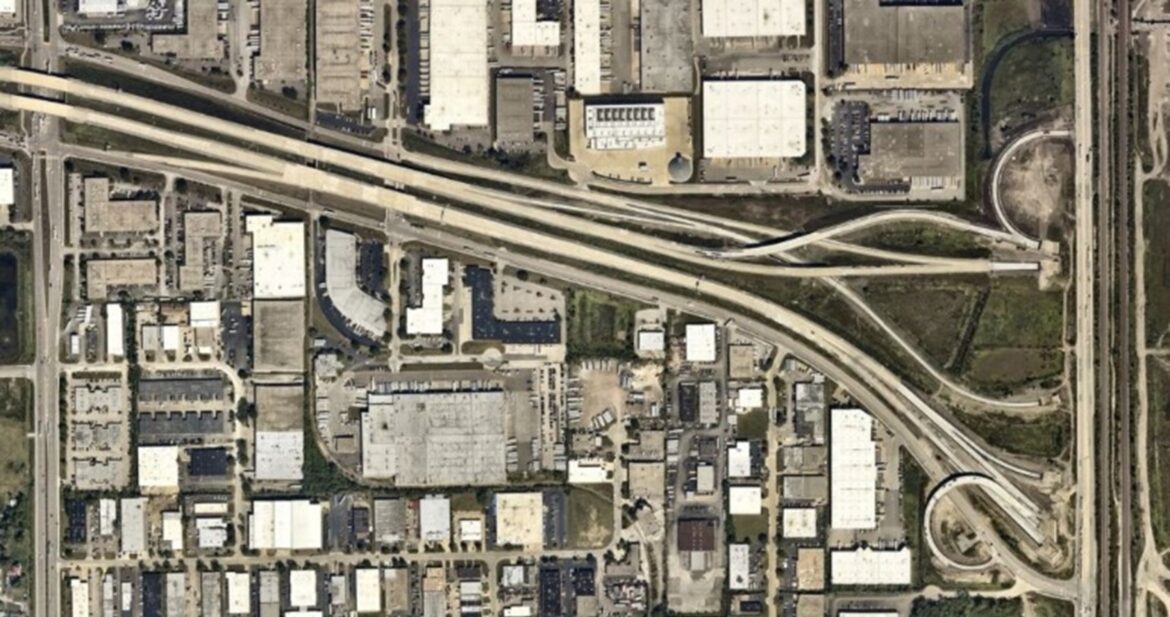
Project Management: Entered a mentor-protégé relationship with URS on this project. QEI’s initial goal was to be better prepared to serve as a Prime Consultant for potential Tollway projects and other clients. This relationship gained greater visibility with the Tollway as they were at many meetings during the project scoping and early project development. In turn, QEI was able to provide URS with assistance as a complete project partner as they were exposed to the entire project scope from the beginning, not just their scope areas. This became even more of a project benefit as QEI provided services to other consultants throughout the Elgin-O’Hare and Western Access Corridor. Also participated in early scoping activities with the project team and helped URS develop the overall project Consultant Quality Plan, which was ultimately approved for use by the Tollway.
Surveying: QEI performed field surveys for all partial Right-Of-Way (ROW) parcel acquisitions from Salt Creek east to Lively Boulevard. For the 18 affected parcels, QEI then provided plats of acquisition and legal descriptions for the parcels. QEI also conducted a tree survey to identify trees along the project corridor. The field survey included identifying the trees’ species, health, and structure and preparing associated technical reports.
Environmental & Permitting: QEI provided appropriate soil erosion and sediment control design and plans as necessary following the Tollway’s Environmental Studies Manual and Erosion and Sediment Control Landscape Manual for two sections of the bypass: 1) from east of Arlington Heights Road to Lively Boulevard; and 2) from Lively Boulevard to Supreme Drive. QEI coordinated all necessary permitting with regulatory agencies (Corps of Engineers, Illinois DNR-OWR, DuPage County) as required for construction. QEI also reviewed the Preliminary Environmental Site Assessment and assisted in writing the Comprehensive Site Investigation Report, Remediation Objectives Report, and Remedial Action Plan for a site along the corridor.
Barrier Warrant Analysis: For all potential hazards to motorists within the project limits, QEI performed a detailed analysis of each potential hazard and provided recommendations to protect the motorists at these locations. Recommendations included relocating the hazard, changes to topography, or providing a guardrail or concrete barrier as part of the design. These analyses are an iterative process – as design elements change during the engineering process, so does hazard analysis for each location.
Utility Coordination: The proposed EOWA facility corridor is located directly over existing Thorndale Avenue, which also happens to be a significant corridor for existing utility facilities. Working with the Design Section Engineer, the Corridor Design Manager, the Corridor Construction Manager, the Tollway utilities team, and affected utility owners, QEI participated in the utility engineering process for the project. This work included identifying all potentially affected utilities within the project limits, working with the designers to determine which utilities would be impacted, working with the utility owners on their designs and schedules for relocations, and assisting the Tollway with documentation for utility relocations and potential reimbursements from the Tollway. For the URS design section, over 100 utility facilities owned by 20 entities were impacted.
Roadway Design: Responsible for frontage road designs and the design of Prospect Avenue within the project limits, including geometric roadway and ramp designs (horizontal and vertical) for Prospect Avenue and the tie-ins to the proposed Frontage Road system, intersection designs for Prospect Avenue and the frontage roads, maintenance-of-traffic for Prospect Avenue and the frontage roads, drainage designs for Prospect Avenue and the frontage roads, preparation of plans, specifications, and construction cost estimates, and the complete sets of Prospect Avenue and the frontage road plans included a total of over 400 sheets which were incorporated into the plan sets for the project that totaled more than 1,100 sheets.
Client: Illinois Tollway
Location: Dupage and Cook Counties, Illinois


